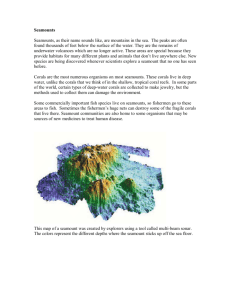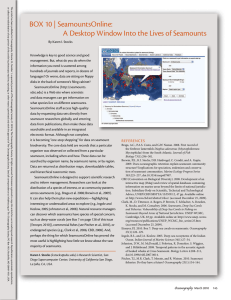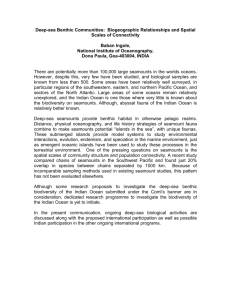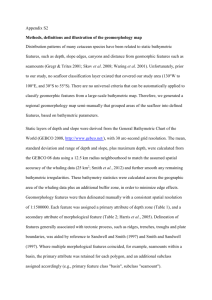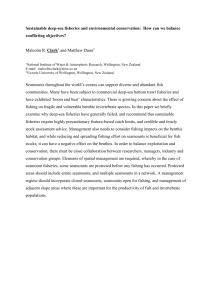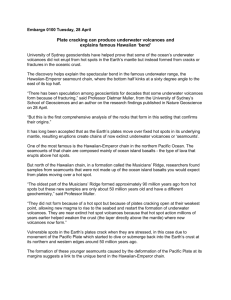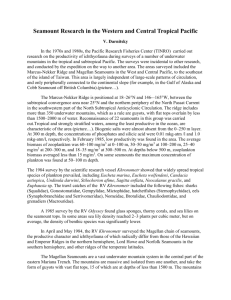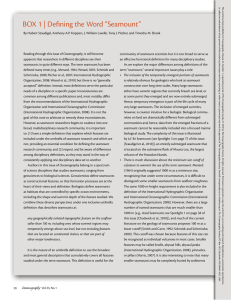Seamount Research
advertisement
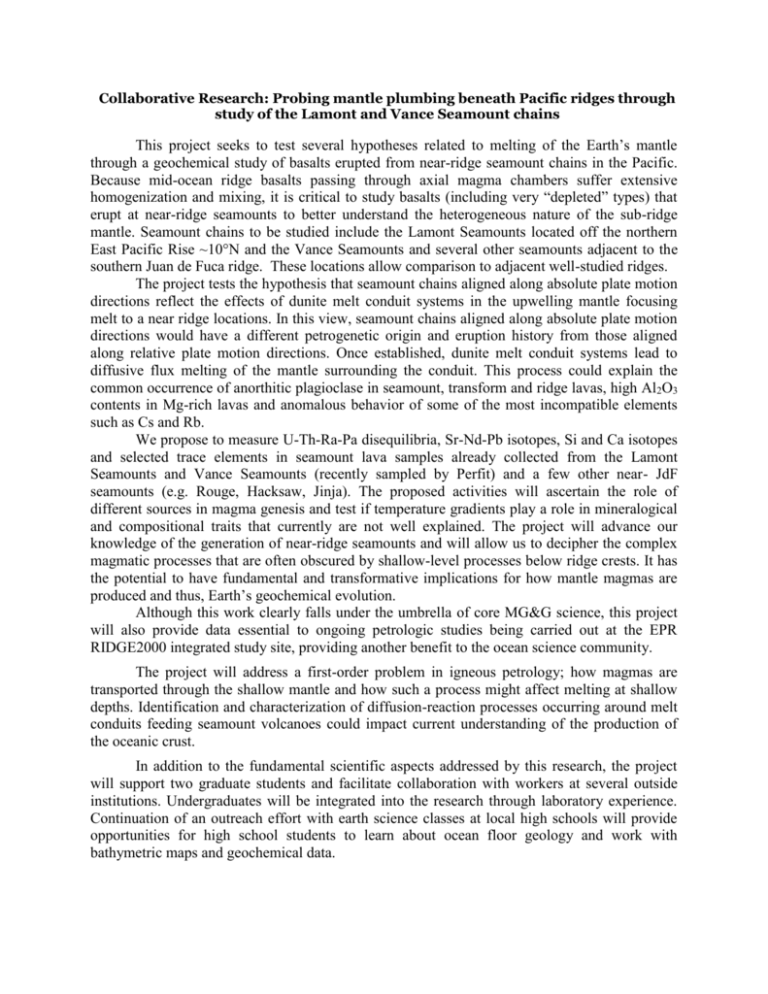
Collaborative Research: Probing mantle plumbing beneath Pacific ridges through study of the Lamont and Vance Seamount chains This project seeks to test several hypotheses related to melting of the Earth’s mantle through a geochemical study of basalts erupted from near-ridge seamount chains in the Pacific. Because mid-ocean ridge basalts passing through axial magma chambers suffer extensive homogenization and mixing, it is critical to study basalts (including very “depleted” types) that erupt at near-ridge seamounts to better understand the heterogeneous nature of the sub-ridge mantle. Seamount chains to be studied include the Lamont Seamounts located off the northern East Pacific Rise ~10°N and the Vance Seamounts and several other seamounts adjacent to the southern Juan de Fuca ridge. These locations allow comparison to adjacent well-studied ridges. The project tests the hypothesis that seamount chains aligned along absolute plate motion directions reflect the effects of dunite melt conduit systems in the upwelling mantle focusing melt to a near ridge locations. In this view, seamount chains aligned along absolute plate motion directions would have a different petrogenetic origin and eruption history from those aligned along relative plate motion directions. Once established, dunite melt conduit systems lead to diffusive flux melting of the mantle surrounding the conduit. This process could explain the common occurrence of anorthitic plagioclase in seamount, transform and ridge lavas, high Al2O3 contents in Mg-rich lavas and anomalous behavior of some of the most incompatible elements such as Cs and Rb. We propose to measure U-Th-Ra-Pa disequilibria, Sr-Nd-Pb isotopes, Si and Ca isotopes and selected trace elements in seamount lava samples already collected from the Lamont Seamounts and Vance Seamounts (recently sampled by Perfit) and a few other near- JdF seamounts (e.g. Rouge, Hacksaw, Jinja). The proposed activities will ascertain the role of different sources in magma genesis and test if temperature gradients play a role in mineralogical and compositional traits that currently are not well explained. The project will advance our knowledge of the generation of near-ridge seamounts and will allow us to decipher the complex magmatic processes that are often obscured by shallow-level processes below ridge crests. It has the potential to have fundamental and transformative implications for how mantle magmas are produced and thus, Earth’s geochemical evolution. Although this work clearly falls under the umbrella of core MG&G science, this project will also provide data essential to ongoing petrologic studies being carried out at the EPR RIDGE2000 integrated study site, providing another benefit to the ocean science community. The project will address a first-order problem in igneous petrology; how magmas are transported through the shallow mantle and how such a process might affect melting at shallow depths. Identification and characterization of diffusion-reaction processes occurring around melt conduits feeding seamount volcanoes could impact current understanding of the production of the oceanic crust. In addition to the fundamental scientific aspects addressed by this research, the project will support two graduate students and facilitate collaboration with workers at several outside institutions. Undergraduates will be integrated into the research through laboratory experience. Continuation of an outreach effort with earth science classes at local high schools will provide opportunities for high school students to learn about ocean floor geology and work with bathymetric maps and geochemical data.
